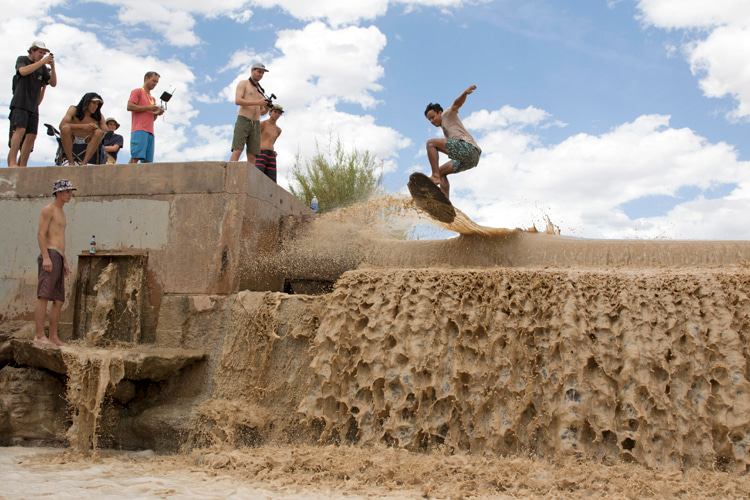Adrien Raza is truly making skimboarding great again as the sport celebrates its 100th anniversary.
But, to get from good to great, the 25-year-old went through a long process of trial and error, succeeding and failing, landing and falling.
The French-born, Rotterdam-based, flatland skimboarder sat down with SurferToday to discuss and reflect on the past, present, and future of the sport.
Raza is not only a highly technical, accomplished skimboarder, but he is also adding the touch of creativity and innovation the sport needs to stay afloat.
Interestingly, Adrien's rides take us to a world that somehow blends some of the most exciting aspects of surfing, skateboarding, and wakeboarding.
Let's take a one-step drop into Planet Skimboarding through the eyes of one of its masters, Adrien "Razzamatazz" Raza.
Where were you born?
I was born in Lagny-sur-Marne. It's a suburb of Paris, France.
Where do you live?
I'm currently living between Rotterdam, Netherlands, and Taipei, Taiwan. Due to the coronavirus situation, I'm living in the Netherlands for now.
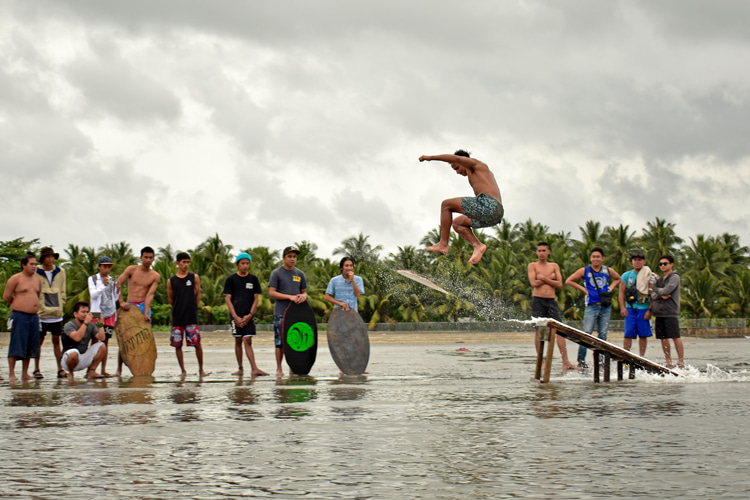
What do you do for a living?
Most of my income comes from skimboarding and marketing work in the skim industry. On the side, I do videography, photography, and other jobs during the off-season.
How did you get in touch with skimboarding?
My cousin bought a $20 supermarket board during a summer vacation in France circa 2007. He was hyped about it and took me to the worst muddy/rocky beach to try it out.
Despite the awful spot, I had a blast that day.
When I got home, I looked up what the pros were doing, and I was hooked. I later discovered there was a community in the Netherlands.
I registered to one of the online forums - old-school social media - and signed up for a lesson with ex-pro skimboarder Adam Hayward from California. The rest is history!
How and where do you train?
When I was younger, I would skim at least 2 to 3 times a week at my local spot, Zevenhuizerplas, near Rotterdam.
The spot wasn't ideal, but my buddy Luke Dirks and I would shovel up the spot and make it rideable every time.
Nowadays, I don't skimboard as much. I feel like 1-2 times a week is the happy medium between progressing and not getting hurt.
In winter, I skimboard less than that.
If I'm in Europe, I like to go to Mülheim-an-der-Ruhr, Germany. My buddies from Skimzone Germany built a sick permanent skimboard park with every obstacle imaginable. It's the best place to practice, in my opinion.
When I'm in Taiwan, I skimboard at Shalun Beach in Tamsui. It's the closest spot to where I live, and we have a little storage site to stash our ramps.
What are your favorite skimming spots?
Way too many. To name a few: Chambers Creek, Virgin River in Utah, Jelitkowo, Swider, Gaomei Wetlands, La Courance, Pont Mahe, SZG park, skimboard pools and my trusty local Zevenhuizerplas.
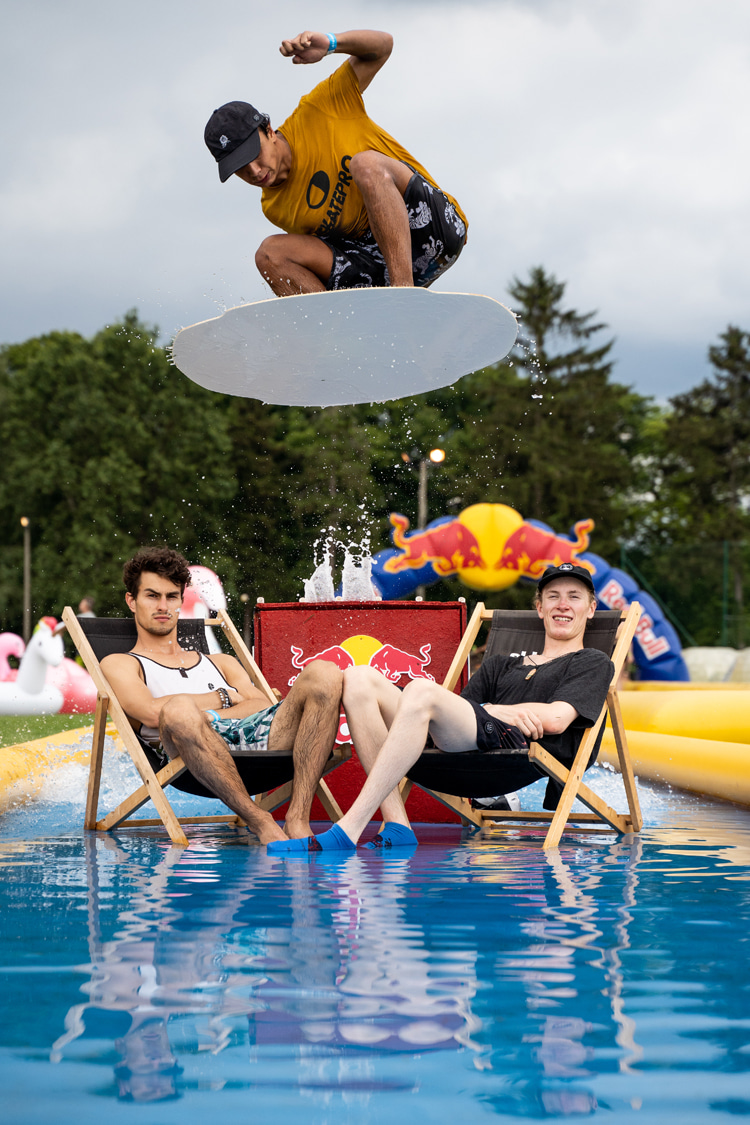
Do you surf, skate, or practice any other sport?
I recently got into surfing. I'm not great at it, but it's a lot of fun!
I'm really into skateboarding and snowboarding. For the non-boardsports, I love kickboxing and freediving. I skateboard the most, though.
Is it possible to pursue a career as a professional skimboarder?
I will speak on behalf of flatland skimboarding here. I'm not knowledgeable enough to answer that about wave skimboarding.
The short answer is kind of. But it's not easy, and there is no format to follow in order to reach that level.
For example, skateboarders can follow the classic shop sponsorship to shoe sponsorship to pro model to pro competitions to pro decks and earn sufficiently to consider it a job.
For flatland skimboarders, solely relying on classic sponsorships and competition prize purses is not enough - not even close.
We live in a world surrounded by social media. It's a blessing and a curse. Having a strong online presence can significantly help with leveraging brand deals and such.
That's where the real pro money can come in.
Skimboarders can also start up brands. Whether it be teaching, skim pools, freelance photo/video, skim parks, etc., it all adds up.
My answer is "kind of" because, as of right now, it's nearly impossible to make a living from just skimboarding.
But by combining the extras, it can work. In my opinion, all the skim-related extras are equally as fun as skimboarding itself, so I count it!
You're a flatland skimboarder specialist. How are your skills in the waves?
Not many people know this, but I started wave skimboarding before flatland.
In my first year and a half of skimboarding, I rode a fiberglass Roush Creations board. Eventually, I picked up a flatland board because the waves in my area were horrible.
I wouldn't consider myself a great wave skimboarder by any means. But I'm able to have fun and turn on the waves.
I love adding my flatland skills down the line, too.
I've been wave skimming a lot more since I've been in Taiwan. To be honest, I enjoy wave skimming just as much as flatland.
I'd love to join a United Skim Tour (UST) competition one day!
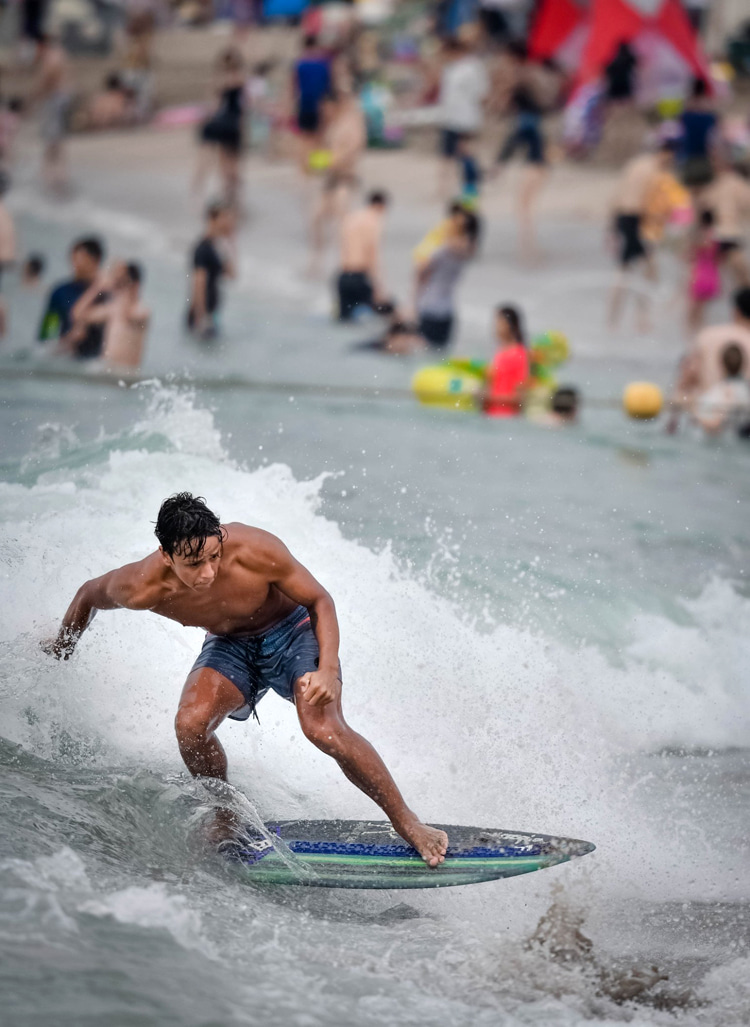
Do you think a complete skimboarder should master the sport's two main disciplines (flatland and waves)?
Absolutely! The sports are very complimentary in a way.
A flatland skimboarder can learn a lot from the way a wave skimboarder drops their board or carves on water.
A wave skimboarder can also greatly improve their tech if they spend more time on a wooden board.
I'm going to focus on improving my wave skimboarding next year. It would be awesome to be at a competitive level in both disciplines.
Do you think flatland skimming is more technical than wave skimboarding?
That's a tough one to answer. I'd say it's a different kind of technical. In my opinion, the technical side of wave skimboarding is timing.
It's very challenging to time your every move since every wave is different. The technical side of flatland is pretty self-explanatory.
Whenever someone asks which one - wave skim or flatland skim - is easier, I always say flatland is easier to start. However, once you reach an advanced level, it's relatively similar in terms of difficulty.
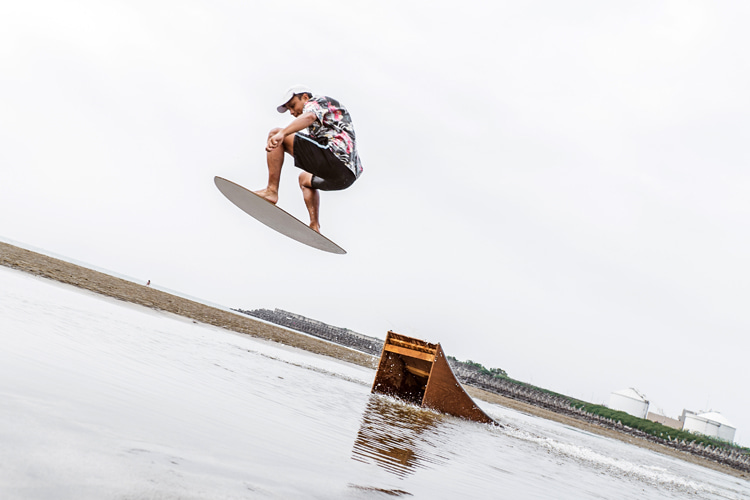
Do you think there are different riding styles, for instance, between European and American skimboarders?
I guess that in the past, it was more prevalent. Sacramento riders had a more street-skater-inspired style, and the guys in Washington would ride bigger snowboard type ramps.
Nowadays, many skimboarders in Europe ride almost exclusively in skimboard pools.
Skim pools are single-laned and generally have more shallow water.
This leads to a more technical, flat style of skimboarding, while the non-pool skimmers might skim different angles and do more popped tricks.
Other than that, I don't see a big difference.
How would you design a sustainable Skimboarding World Tour format?
That's a tough one. To be honest - I don't think flatland skimboarding is ready for a proper world tour yet.
My best answer is that the sport has to grow before figuring that out.
With growth comes change, so it's hard to predict how the sport will develop once we get there - step by step. If we get 100 times more people into skimboarding, the rest will follow naturally.
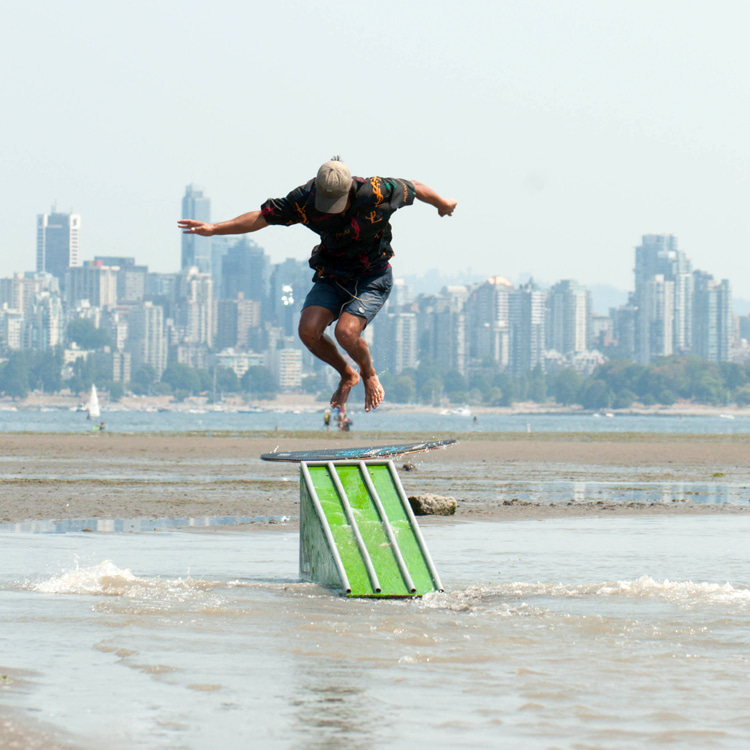
What are the best and worst characteristics of both the United Skim Tour (WST) and the European Skimboarding Cup?
I won't speak on behalf of the UST because I've never been to a stop. From what I've seen in videos, it looks awesome, though.
The best part is being able to travel and meet with skimboarders around Europe. The events always feel like a reunion with old friends!
The competition organizers usually build unique ramps, which we don't normally ride. That makes it exciting.
The worst part is it hasn't significantly grown since its start. But I'm sure that'll happen once the pandemic passes.
Do you think skimboarding is growing steadily, or is it the other way around?
In the past five years, it's been pretty stagnant. I would say it's growing this year. We're seeing a little boom right now.
Board sales have been over the roof this year.
That might be due to a pandemic, but either way, it's a good thing. I guess we'll have to wait and see how things are once it gets warmer!
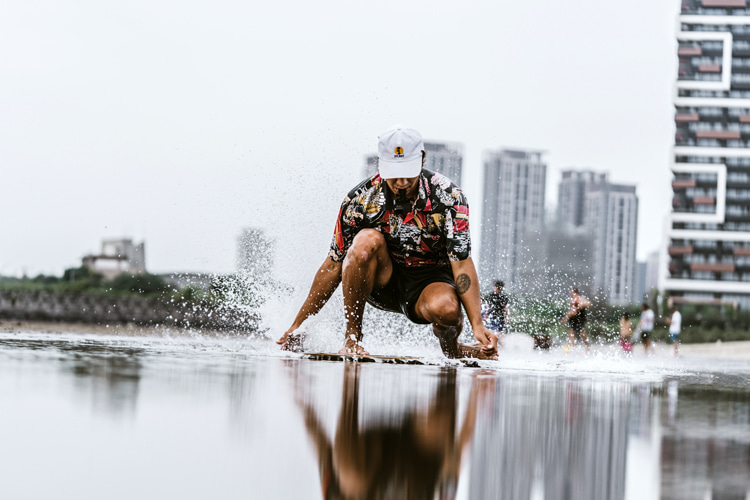
Skimboard is not part of any major global sports governing body. Do you think it should be promoted by the International Surfing Association (ISA)?
I'm sure it would help legitimize the sport.
The current associations have a low or no budget at all, so it would be great to have a qualified organization backing it.
I think the ISA might pick up wave skimboarding one day, but I'm not sure about flatland. I don't think we fit in any box for now. I would love to see it, though.
You've been taking skimboarding into unexplored territories and areas like streets and natural obstacles. Do you think the sport should be more creative and less limited when it comes to its riding arena?
Absolutely! I really think that's the way to go!
Not riding on concrete or ditches per se, but my goal in creating these videos is to show there is still so much untouched territory in skimboarding.
Hopefully, others will follow and find innovative ways to ride their skimboards as well.
I feel like we've been riding the same spots, ramps, and tricks for far too long. Skimboarding is already so versatile as it is.
So if we can elevate that even more, it'll blow up.
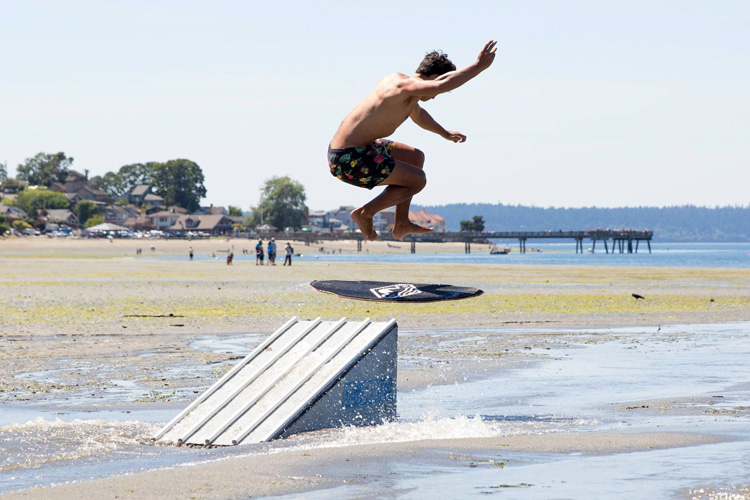
Where should skimboarding get inspiration for new tricks and maneuvers? Surfing, skateboarding, wakeboarding, kiteboarding?
I take most of my inspiration from skateboarding and wakeskating. These are very similar sports in terms of tricks on obstacles.
Skimboarding celebrates its 100th anniversary in 2020. How do you see the sport at the moment?
Wow! I had no idea! That's crazy. I feel like skimboarding has seen a lot of minor ups and downs.
It's at a stage where practically everyone has seen or heard of the basic/beginner sand-sliding aspect of skimboarding.
But not many people know about high-level riding.
I get daily comments of people writing, "Oh my God, you can ollie on a skimboard," when people have been throwing ollies for decades.
I guess "real" skimboarding is still in its early stages.
How do you see skimboarding in 10 or 20 years?
Mainstream! That's my goal.
